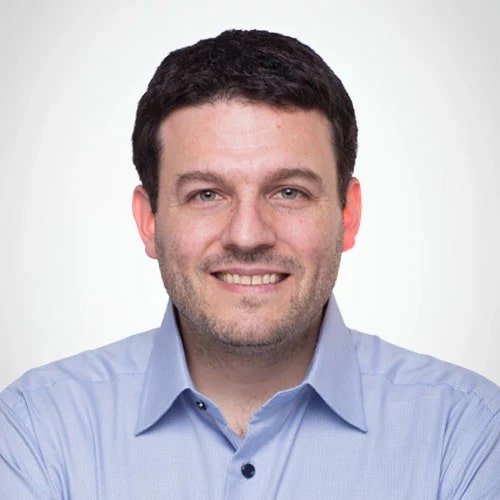Customer experience (CX) is becoming an ever-greater asset for businesses that want to thrive. Companies that offer it gain greater customer loyalty and, as a result, higher revenues. But what characterizes a great CX? From the customer’s point of view, it includes things like frictionless purchasing, easy returns, omnichannel support, and empathetic employees. CX is the totality of a customer’s feelings about their interactions with a particular organization.
When a company delivers an excellent CX, it’s not by accident. It comes from a customer-centric strategy that focuses mostly on customers for all its decisions. These businesses not only hold customer-centricity as part of their customer culture, but they also create written plans, or roadmaps, to help them plan their customer-centric journeys.
A roadmap is a plan that defines company intentions covering all aspects of business operations into the future. It includes goals, milestones, and strategies to ensure the company is aligning itself with a customer-centric approach. Here, I explain why you should create a customer-centric roadmap, how to do it, how to follow it, and how to know it’s effective.
Why Create a Customer-Centric Roadmap?
An experience renaissance is afoot — one that is galvanizing companies to push beyond the CX philosophy and organize the whole business around the delivery of exceptional experiences. This movement is based on customer needs and demands. If a company wants to remain competitive, it must acknowledge this critical trend.
Without a clear strategy, a company may miss the mark, displease customers, and watch helplessly as they defect to a competitor. Losing customers means losing credibility, revenue, and the free social media marketing that comes from highly satisfied customers, otherwise known as raving fans.
Steps for Creating Your Roadmap
Use these steps as a starting point to create your roadmap:
- Understand your customers. Through data and direct customer feedback, gain a thorough understanding of what customers want and need. You might have to do some inferring about what their actions are telling you. For example, numerous complaints about lost packages may lead you to realize you need a different shipping company.
- Create customer journeys. The roadmap should take you through each touchpoint a customer is likely to have with your company, including discovery, consideration, purchase, and customer care. Examine all of these components separately to determine how you can do better at each one.
- Develop improvement goals. When you have understood your customers and examined how you can better meet their needs, set goals to do so. Make each goal measurable and manageable. For instance, do you need more team members? A new customer relationship management (CRM) system? A change in R&D processes?
- Assign timelines and milestones. Determine which goals are most pressing and put them at the top of your list. Develop timelines for each one, including a likely completion date. Then capture milestones — that is, interim steps to help you reach your goal, such as exploring possible CRM systems.
- Revisit your roadmap. No business plan can be written in stone. You must account for changes in the market, technology, innovation, and customer needs over time. Revisit your roadmap at least once per year to ensure every part of it is aligned with customer needs and customer-centric company values.
Best Practices
The following best practices may be part of your roadmap, or simply actions you can take to support it:
Hire customer-centric employees. Customers’ interactions with employees can make or break the entirety of their experience. You can always teach team members about your products or services but it’s much harder to teach true empathy and a willingness to do what it takes to make things right. Look for those qualities in potential workers.
Build company culture around customer care. Implement incentives that encourage employees to continue to outshine themselves. For example, hold a contest for the most innovative way of helping a customer. Give the team member that wins something of value such as a gift card or time off.
Take advantage of customer data. When you collect customer data, be sure to use it to understand their behavior. Things like items added to an eCommerce cart and then removed, number of visits to a store, and frequency of returns can help you build a picture of customers’ preferences and habits while also pointing to potential issues. Use that picture to make improvements in your operations.
Ask customers frequently for their feedback. Customer data is useful, but it doesn’t tell the whole story. Send out surveys or contact customers individually to gather their insights. Ask about specific things, such as the quality of customer care in troubleshooting a problem, but also open-ended questions like, “What can we do better?”
Put customers front and center in any decision. When pondering shifts within the company, think first about how making or not making the change will impact customers. From a move to a new physical location to eCommerce site updates to potential new products, ask whether it will be beneficial for customers.
The following video emphasizes the importance of putting customers at the center of decision-making:
Measuring Success
How do you know if your customer-centric roadmap is guiding you to the right place? You need customer success metrics to find out. Consider the following ones or develop your own:
- Net Promoter Score – compiled by determining the average score from customers on the question, “How likely are you to recommend us to a friend or colleague?”
- Churn Rate – the rate at which customers leave for another brand
- Customer Lifetime Value – the amount of revenue a customer contributes to your business during the time they do business with you
The Challenges Are Worth It
Shifting your operations to become more customer-centric isn’t easy. You may encounter things like barriers to data sharing, a culture that resists customer-centricity, a lack of support from critical stakeholders, or company rules that make change difficult to implement or manage. All of these challenges can be overcome and doing so is well worth the trouble.
Beyond additional revenue and a polished reputation, your customer-centric company will gain loyalty and a sense of partnership with customers. These elements contribute to a whole new way of doing business.







